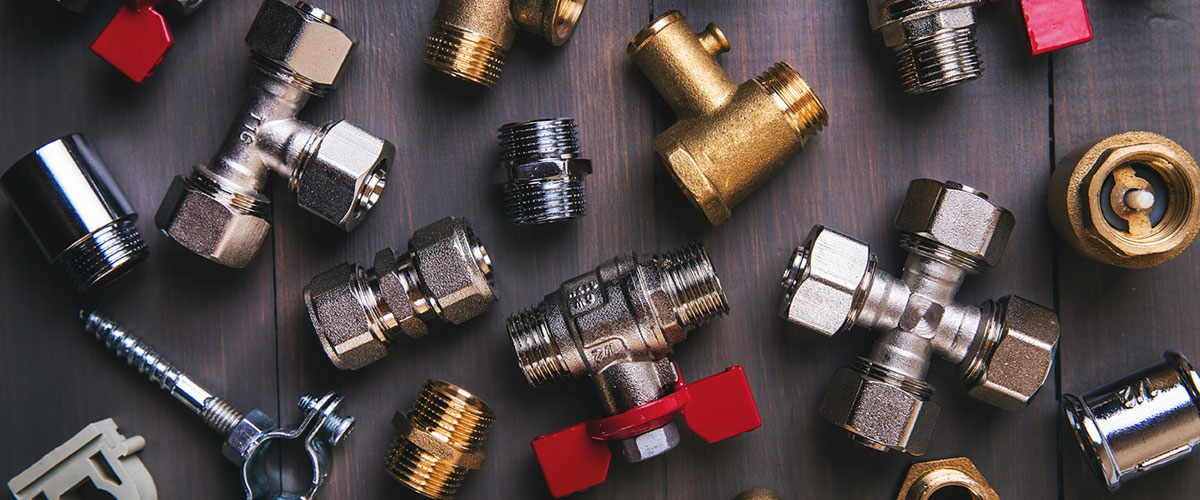Pipe Fittings – Types, Applications & Selection Guide

Pipe fittings are an essential component of any piping system, enabling pipes to change direction, branch off, or connect to equipment. Choosing the right pipe fittings ensures a secure, leak-free, and efficient fluid or gas flow system — a priority for any construction or industrial project.
At Anamta Internationals LLC, we supply a wide variety of pipe fittings, from standard elbows and tees to specialty flanges and couplings. This guide will introduce you to the main types of pipe fittings, their applications, and how to select the right fittings for your project.
What Are Pipe Fittings?
Pipe fittings are components used to connect straight pipe sections, adapt different sizes, change flow direction, or seal pipe ends. They come in various materials like PVC, GI (Galvanized Iron), stainless steel, brass, and copper, depending on the application.
Common Types of Pipe Fittings
1. Elbows
- Purpose: Change the direction of flow, usually by 45° or 90° angles.
- Applications: Plumbing, irrigation, industrial piping.
- Materials: PVC, GI, stainless steel.
2. Tees
- Purpose: Allow the pipeline to split or combine flows.
- Applications: Branching pipelines for water, gas, or chemicals.
- Types: Equal tees (same size all ports), reducing tees (different sizes).
3. Couplings
- Purpose: Connect two pipes in a straight line.
- Applications: Repair or extend pipeline lengths.
- Materials: Steel, PVC, brass
4. Unions
- Purpose: Connect two pipes but allow easy disconnection without cutting.
- Applications: Maintenance and repair tasks where parts need frequent removal.
5. Reducers
- Purpose: Connect pipes of different diameters.
- Applications: Adaptation from larger mains to smaller branch lines.
6. Flanges
- Purpose: Connect pipes to valves, pumps, or other equipment.
- Applications: High-pressure or high-temperature systems where a secure, tight seal is
essential.
- Types: Weld neck, slip-on, blind flanges.
7. Caps and Plugs
- Purpose: Close the end of a pipe.
- Applications: Temporary or permanent sealing of pipe ends
Material Selection for Pipe Fittings
Material choice depends on:
- Fluid type (water, oil, gas, chemicals)
- Pressure and temperature of the system
- Environmental conditions (corrosion, UV exposure)
- Compliance with standards (ASTM, ANSI, ISO)
Examples:
- PVC fittings are excellent for water and drainage systems due to corrosion resistance.
- GI fittings are preferred in construction for water and gas supply lines.
- Stainless steel fittings are ideal for chemical or food processing due to their strength and corrosion resistance.
How to Select the Right Pipe Fitting
- Know Your Application: Understand the media being transported and environmental conditions.
- Match Size and Type: Use fittings that correspond exactly to your pipe size and type.
- Pressure Ratings: Choose fittings rated to handle your system’s maximum pressure.
- Connection Type: Decide between threaded, welded, or socket fittings based on installation needs.
- Compliance: Ensure fittings meet relevant industry standards and certifications.
Anamta Internationals LLC – Your Trusted Pipe Fitting Supplier
We offer:
- Extensive stock of PVC, GI, stainless steel, brass fittings
- Custom orders for specialized projects
- Certified products compliant with UAE and international standards
- Expert technical support and project consultation
- Fast delivery across UAE and GCC
